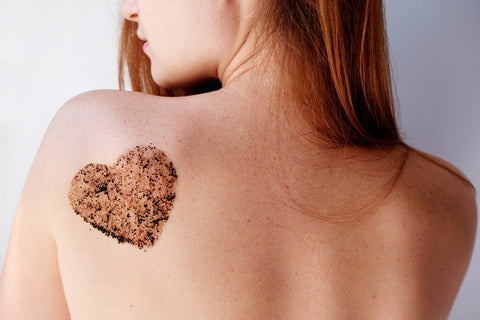How to Naturally Battle Hyperpigmentation & Dark Spots

It seems some people are lucky enough to simply be born with perfect skin. For the rest of us, achieving a smooth, even complexion can require a little extra effort. A common but harmless skincare woe many people struggle with is hyperpigmentation.
So, what is hyperpigmentation? Hyperpigmentation is a condition in which patches of skin become darker than the surrounding area. This happens when melanin, the pigment that produces skin color, forms deposits. Hyperpigmentation can be attributed to a variety of factors, such as aging, sun damage, acne, hormones, or even genetics. But that doesn’t mean you can’t improve its appearance! Here’s a quick guide to reducing hyperpigmentation in the comfort of your own home.

Hydrate
We hear it all the time, “drink more water!” In fact, we hear this advice so often it can begin to fall on deaf ears, but it’s an important step to take if you’re looking to improve not only your skin, but your overall health and wellness. Staying properly hydrated helps with the cell turnover, which is key in the process of lightening up scars, dark spots, and uneven skin tone and texture. The amount of water you need to drink individually depends on your weight and activity levels, but it is generally recommended you drink eight, eight-ounce glasses per day.
Exfoliate
What you may believe to be hyperpigmentation might actually be a build-up of dead skin cells. Gross, right? Sometimes our skin needs a little help removing this excess dead skin. You can achieve this by gently exfoliating your skin 2-3 times per week, depending on your skin type.
We recommend something that is both hydrating and exfoliating, like our Silt Body Scrub. The colloidal freshwater silt gently sloughs away dead skin, while red algae helps to soothe and hydrate.
Professional Use Tip: The colloidal freshwater silt used in our Silt Scrub contains naturally-occurring humic acids, which offer the same skin benefits as alpha hydroxy acids. Try leaving Silt Scub on the skin for a few extra minutes, like a mask, to enjoy the results of not only the manual exfoliation but a gentle chemical sluffing too. Plus, no dryness or irritation like you can get with more aggressive formulas. Win-win!
Our Aroma Peel is another great natural option for targeting hyperpigmentation. Free of harsh chemicals like glycolic acid treatments, this peel gently eliminates dead skin cells to reveal smoother, more even skin. We recommend doing a series of six treatments, once per week to improve the look of hyperpigmentation. Continue monthly treatments afterward to maintain results.

Protect
As we mentioned, common causes of hyperpigmentation include sun damage and acne. We know these things can be unavoidable, but there are preventative steps we can take to reduce the chances of hyperpigmentation.
Hyperpigmentation can show up as age spots, which are typically found on the face, neck, chest and hands after sun exposure. Wearing sunscreen on exposed skin daily can help prevent or significantly reduce this darkening.
Breakouts happen – don’t make them worse by picking at them! Picking acne increases inflammation, which can make existing hyperpigmentation much worse. You’re better off leaving it be or spot treating with something calming like our Acne & Blemish infusion.
Acne spots can also darken and take longer to heal when exposed to damaging UV rays, so just another reason to lather on the sunscreen!
Incorporating antioxidant-rich products like our Customized Facial Cocktail into your routine will also help in reducing your chances of developing future hyperpigmentation. Antioxidants prevent environmental toxins from weakening the skin and encourage healthy cellular function. We suggest adding a prickly pear shot to your cocktail, as it’s high in antioxidants and omega-6.
These are just a few daily maintenance steps you can take to prevent hyperpigmentation from occurring. As with any skincare regimen, time and consistency are key to seeing results.


Leave a comment